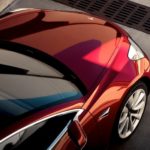If you’re at all interested in an electric sedan, particularly a fastback model, then that’s exactly the sort of question you’ve probably asked. And the answer is a resounding, “maybe.” It really depends on what you’re looking for, and specifically what models and options you’re looking at. Ultimately, the Polestar 2 is an excellent vehicle with a gorgeous fastback design that’s a little closer to what most people probably expect in a sedan. When compared to the Tesla Model 3, it comes out on top in some ways but falls behind in others.
I know that Polestar has already found quite a few supporters and is making new fans every day, and that’s a great thing. There should be competition in the EV marketplace, and a company like Polestar making a name for itself is the perfect way to make this technology more accessible. That being said, Polestar is definitely not in a position to simply leave Tesla and others in its wake or become the dominant name in the EV auto industry. However, they’re certainly doing some things right, so let’s take a look at the Polestar 2 and how it stacks up compared to the Tesla Model 3.
Battery Range and Charging
When you’re talking about EV models, the battery is a great place to start, so let’s look at what you can expect with these two fastbacks. For now, we’re focusing purely on range and charging – we’ll get to performance in a moment.
The Polestar 2 has a two-motor design, with motors on both the front and rear axle, and a 78 kWh battery. When fully charged, you can go an EPA-estimated 233 miles with the Polestar 2, which is excellent. This is the only battery setup available for the Polestar 2 – there’s a Performance Package available, but it only enhances the driving experience. It doesn’t upgrade the battery or allow for extended range.
By comparison, the Tesla Model 3 is available in three configurations, starting with a single motor on the rear axle, as well as two different dual-motor setups. The base Standard Plus trim with a single motor and 54 kWh battery has a maximum range of up to 263 miles on a full charge. The Model 3 Performance and Long Range AWD trims both have dual motors and 75 kWh batteries, but the former has a range of 315 miles while the latter can go up to 353 miles. So, as you can see, the Tesla Model 3 comes out on top in terms of range. When looking at the base trims, the Polestar 2 comes pretty close, but once you are into the higher trims of the Tesla, the Polestar just can’t keep up.
Speed and Performance
Since these are both fastback models, we should take a moment to consider the kind of performance they have to offer. As we saw above, the standard Polestar 2 comes with a dual-motor configuration, while the standard Tesla Model 3 has a single-motor rear-wheel drive setup. So, purely based on that, the Polestar 2 does have an advantage – though you can choose a dual-motor version of the Model 3 if you prefer, and even the top Performance trim of the Model 3 is still nearly $10,000 less expensive than the $59,900 base price of the Polestar 2.
With its 408 hp and 487 lb-ft of torque, the Polestar 2 offers an exhilarating driving experience and can go from 0 to 60 in just 4.7 seconds. There’s also a Performance Package available that adds things like 20-inch forged alloy wheels, dual flow valve dampers for incredible traction, and Brembo brakes that allow for precise control and stopping power. It’s an excellent package that really lets you take advantage of the kind of power the Polestar 2 has to offer.
Looking at the Tesla Model 3, we see kind of a mixed bag. The Standard Plus model with a single motor can go from 0 to 60 in 5.3 seconds, notably slower than the Polestar 2. But once you look at the Long Range AWD Model 3, you see the Tesla can go from 0 to 60 in 4.2 seconds; and if you go with the Performance model, that goes down to 3.1 seconds. The Model 3 Performance also features 20-inch wheels, a lowered suspension, and performance brakes for a very impressive overall level of performance.
Driver Technology
The batteries and motors are only part of the technology that makes these EV models so impressive, so let’s take a look at what kinds of features you get to interact with while driving them. The Polestar 2 comes with a gorgeous 12.3-inch digital driver instrument panel that displays information, including charging status and showing instrument clusters while driving. Features display in a responsive manner, shrinking and enlarging while you drive to showcase the most important information, and a frameless 11.2-inch center display provides you with navigation and entertainment.
You get an incredible Harman Kardon premium sound system inside the Polestar 2, plus it has full integration with Google services. It can even recognize you based on your phone, adjusting seat and entertainment settings when you get in, automatically. And with natural speech recognition, the Polestar 2 can easily understand you and follow your directions.
Inside the Tesla Model 3, you’ll find a number of impressive tech features as well. The interior lacks a driver display and instead draws your focus toward a large, stunning 15-inch center touchscreen display. This provides you with everything you need to keep track of, while an immersive, premium sound system envelopes you in gorgeous audio. The tinted, all-glass roof and over-the-air software updates round out the technology and interior features that have earned the Tesla Model 3 a reputation for a truly unique driving experience.
Safety Features
Both of these vehicles have fantastic safety features, the likes of which you won’t find on just any other vehicle out there. For example, the Polestar 2 lets you choose between standard and adaptive cruise control. When you activate adaptive cruise control, the car will automatically adjust to the speed of vehicles in front of you while also activating pilot assist, which helps keep the Polestar 2 in the middle of its lane. You also get front and rear park assist, a 360-surround camera view to have better visibility at low speeds, and a blind spot information system with steer assist to help protect you from unseen vehicles.
The Tesla Model 3’s safety systems are also incredibly impressive, coming standard with radar, 360-degree camera coverage, and 12 ultrasonic sensors. Every Model 3 includes Autopilot, which allows it to steer, accelerate, and brake automatically based on the actions of other vehicles and nearby pedestrians. Upgrading to Full Self-Driving adds the ability for the Model 3 to navigate for itself, safely change lanes, identify traffic signs and stop lights, and automatically park for you once you’re off the highway – both parallel and perpendicular parking. You can even use the Summon feature to have your car come to find you in a parking lot. As you can see, both of these vehicles get high marks in safety, though Tesla’s Full Self-Driving feature is definitely a standout.
Final Assessment
So, does the Polestar 2 beat the Tesla Model 3? Not necessarily, though it’s certainly a worthy competitor. Really, it’s going to come down to what you’re looking for in an EV fastback and which model really checks all of your boxes. But no matter which one you choose, you’re going to find yourself in a gorgeous ride that is incredibly fun to drive.






